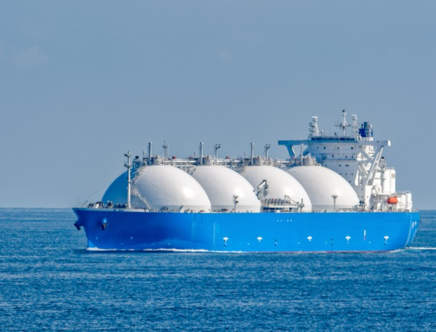A brand-new world-scale LNG export project has been announced for southern Louisiana—and it has the potential to reshape Gulf Coast gas flows for decades.
Argent LNG, LLC, a privately owned company, revealed plans to develop the Argent LNG Project, a massive 25 million-tons-per-annum (MTPA) liquefied natural gas export terminal in Port Fourchon, Lafourche Parish. If built, Argent LNG would become one of the largest LNG export facilities in the United States, rivaling current megaprojects like Sabine Pass, Corpus Christi, and Venture Global’s Plaquemines LNG.
This announcement adds yet another multibillion-dollar LNG development to the U.S. Gulf Coast—signaling strong long-term confidence in global natural gas demand despite recent regulatory pauses and market volatility.
Advertisment
Why Port Fourchon? A Strategic Energy Hub
Port Fourchon is one of the most critical pieces of energy infrastructure in the United States.
- It services more than 90% of all Gulf of Mexico deepwater oil & gas activity.
- It is a logistics backbone for offshore drilling, subsea operations, production facilities, and deepwater projects.
- It offers deepwater access, existing energy service infrastructure, and proximity to major pipeline corridors.
For Argent LNG, Port Fourchon provides both strategic location and existing industrial scale, reducing greenfield hurdles compared to more remote sites.
Project Details
Scale
- Capacity: 25 MTPA (≈ 3.3 Bcf/d of natural gas feed gas)
- This places Argent LNG among the top 5 largest U.S. LNG export terminals ever proposed.
Developer
- Argent LNG, LLC (privately held)
Pipeline Connectivity
The project plans to interconnect with the Kinetica Energy interstate pipeline system, which provides downstream access to:
- Tennessee Gas Pipeline (TGP)
- Additional Gulf Coast pipeline networks linking to:
- Haynesville Shale
- Permian Basin
- Appalachia (via TGP backhaul opportunities)
- Gulf of Mexico shelf production
This gives Argent LNG a highly flexible sourcing strategy—crucial for long-term feed gas reliability.
Why This Project Matters: U.S. LNG Expansion Isn’t Slowing Down
Despite policy headwinds earlier in 2024–2025—including the temporary pause on new LNG export approvals—developers continue announcing massive projects. Why?
1. Global LNG Demand Is Surging
- Europe needs long-term replacement for Russian pipeline gas.
- Asian markets (China, India, South Korea, Southeast Asia) are expanding gas-fired power capacity.
- Emerging LNG buyers are signing 15–25 year contracts.
2. U.S. Gas Supply Is Abundant
Massive growth in the Haynesville, Permian, and Appalachia basins enables:
- Lower production costs
- Strong long-term export competitiveness
- Ability to support 3–5 Bcf/d feed gas commitments
3. Energy Security Priorities Are Driving Long-Term Decisions
Governments and utilities worldwide are prioritizing:
- Diversified gas supply
- Contract stability
- U.S. LNG reliability
- Portfolio flexibility for power generation
4. The Gulf Coast Remains the LNG Capital of the World
With Argent LNG added to the roster, the U.S. Gulf Coast continues to dominate global LNG supply growth.
Market Impact: What 25 MTPA Means for U.S. Gas Producers
A facility of this size has major implications across U.S. natural gas markets.
1. Feed Gas Demand
25 MTPA = 3.3 Bcf/d of new demand
That is the equivalent of:
- ~40% of Louisiana’s daily gas production
- Nearly all current Permian gas flaring volumes
- ~2,500 new horizontal wells in the Haynesville over 20 years
2. Gulf Coast Pipeline Flow Shifts
Expect increased transportation demand for:
- Haynesville → Gulf Coast
- Permian → Gulf Coast (via Gulf Coast Express, Permian Highway, Matterhorn)
- Appalachia → LNG demand (via backhauls into TGP and downstream expansions)
3. Long-Term Price Support
A new 3+ Bcf/d pull on the system tightens balances in the late 2020s and early 2030s—supportive of:
- Henry Hub stability
- Haynesville development
- Midstream expansion (compression, looping, debottlenecking)
4. Increased Competition for Molecules
As more LNG plants ramp up, Gulf Coast industrial users (petrochemicals, ammonia, hydrogen) will compete for the same gas—driving new infrastructure investment.
Port Fourchon: Positioned for the Next Wave of Energy Infrastructure
Port Fourchon is evolving from purely an offshore oil hub to a diversified energy and logistics platform:
- LNG Export
- Offshore Wind Support
- Carbon Capture & Storage (CCS)
- Deepwater Offshore Oil & Gas
- Subsea Manufacturing & Services
Argent LNG fits into a larger transformation where Louisiana becomes the epicenter of U.S. energy exports—from hydrocarbons to low-carbon fuels.
What’s Next for Argent LNG?
Here’s what to watch in the coming months:
- FERC filings and environmental reviews
- Feed gas contract announcements (Haynesville operators will be first movers)
- Offtake agreements with Asian and European utilities
- Construction timeline and EPC selection
- Local economic impact studies
- Pipeline expansion plans from Kinetica and TGP
If Argent LNG secures long-term buyers, it has the potential to become one of North America’s largest LNG complexes.
Final Takeaway
The Argent LNG Project is a big deal—a real sign that the U.S. LNG growth story isn’t slowing. At 25 MTPA, the project would reshape Gulf Coast gas markets, elevate Port Fourchon’s role in global energy, and create one of the largest new demand centers for U.S. natural gas.
For operators, midstream planners, and service companies, this is a development to watch closely.
Advertisment


